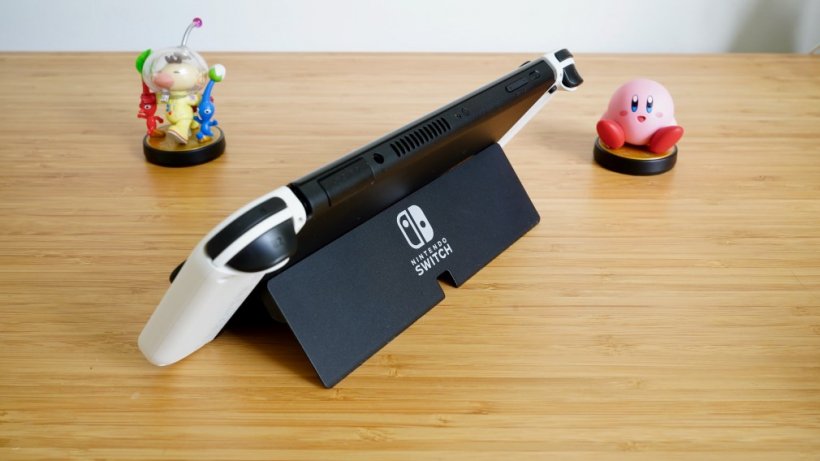
The second major revision of the Nintendo’s hybrid handheld isn’t the console many were hoping for. There’s no power bump, no 4K docked mode and no apparent redesign of those flawed Joy-Con controllers.
This was all known ahead of the launch of the Nintendo Switch OLED, and if I’m being perfectly honest, I was all ready for a relatively downbeat, dismissive reaction.
And yet I find myself sat here looking at its cool monotone form with nothing but affection, and loath to give it back. How could this have happened?

Right there in black and white
Let’s answer that last question straight off the bat: it’s the OLED display. Of course it is. This is the only meaningful new feature of the Nintendo Switch OLED, after all, and it’s right there in the name.What I wasn’t prepared for was just how transformative that display could be. And that’s from someone who reviews phones with my other professional hat on and is thus well aware of the benefits of OLED technology.
In a single sentence, OLED’s unique attributes provide deeper blacks, more vibrant colours, and way better contrast than the LCD found in the first two Switch models. Add to that a vital increase in size from 6 to 7-inches, and you have a way superior gaming canvass.
Also read:
With these two things, the games you know and love look richer, clearer, and somehow even crisper, despite the fact that the resolution hasn’t been increased beyond 720p.
To put it another way, playing Splatoon 2 directly on the Switch OLED now feels like it directly mirrors the experience of playing it on my 55-inch LG OLED TV. Its gaudy paint-splashed battlefields pop with just as much brilliance here.
It’s no longer the second class, compromised experience it was before. This has fundamentally changed how I play the Switch, from 90% docked to something closer to 50–50. I’ve been playing Metroid Dread predominantly in handheld because it somehow looks and feels better that way.

Quality of life improvements
While I said it was all about that OLED display, that’s not strictly true. There are three other ways in which the new Switch OLED improves upon the original.First up is the speaker situation. The new stereo speakers just underneath the display are way louder and clearer than before, which again makes it far less of a compromise playing in handheld.
Then there’s the all-new kickstand, which is actually functional this time around. Anyone who’s tried propping up the Switch on a less than flat surface before will know how truly awful its flappy stand is, but the Switch OLED gives you a firmly planted and infinitely adjustable stand that runs the entire length of the body.
Finally, the dock incorporates a LAN port. That might not mean much to some of you, but a physical internet connection makes docked online play way more stable, lowers lag, and opens the potential for faster game downloads too.

Is Nintendo Switch OLED a worthwhile upgrade?
Negatives? Well, the Nintendo Switch OLED is 22g heavier than before, which is not the direction of travel that we would have chosen. But at least you have that usable kickstand now.Otherwise, the biggest negative is the lack of change we outlined at the start. Or rather, if you’re thinking of upgrading from an original Switch, it’s the inevitable change that’s just around the corner.
Make no mistake, a more powerful Switch is out there, whether it ends up being called the Switch Pro, the Switch 4K, the Switch 2, or something else entirely. There’s been too much smoke for there to be no fire on this one.
And if reports are to be believed, this new Switch could be closer to release than you might think, perhaps even as early as next year. Can you really justify spending around £300 on a relatively straight replacement for your Switch when it may well be superseded in just a year or two?
As much as I found myself enjoying the Switch OLED, if your original Switch is in perfect working order and you spend most of your time docked, there really isn’t a clear case for upgrading. If you prefer to play mostly in handheld, however, that case definitely exists, which still surprises me to say.
The Switch OLED is far more transformative than I anticipated. It’s no Pro, but it sure is good at what it does.
Nintendo Switch OLED review – “A surprisingly compelling upgrade”

